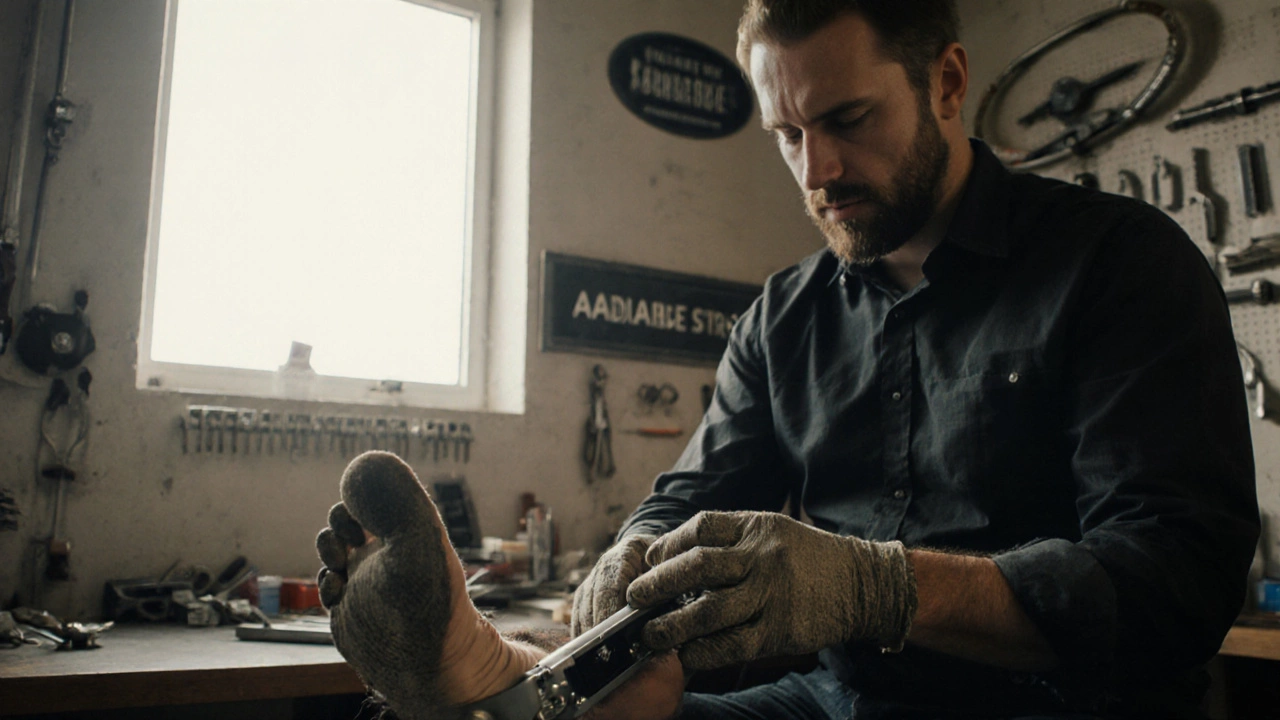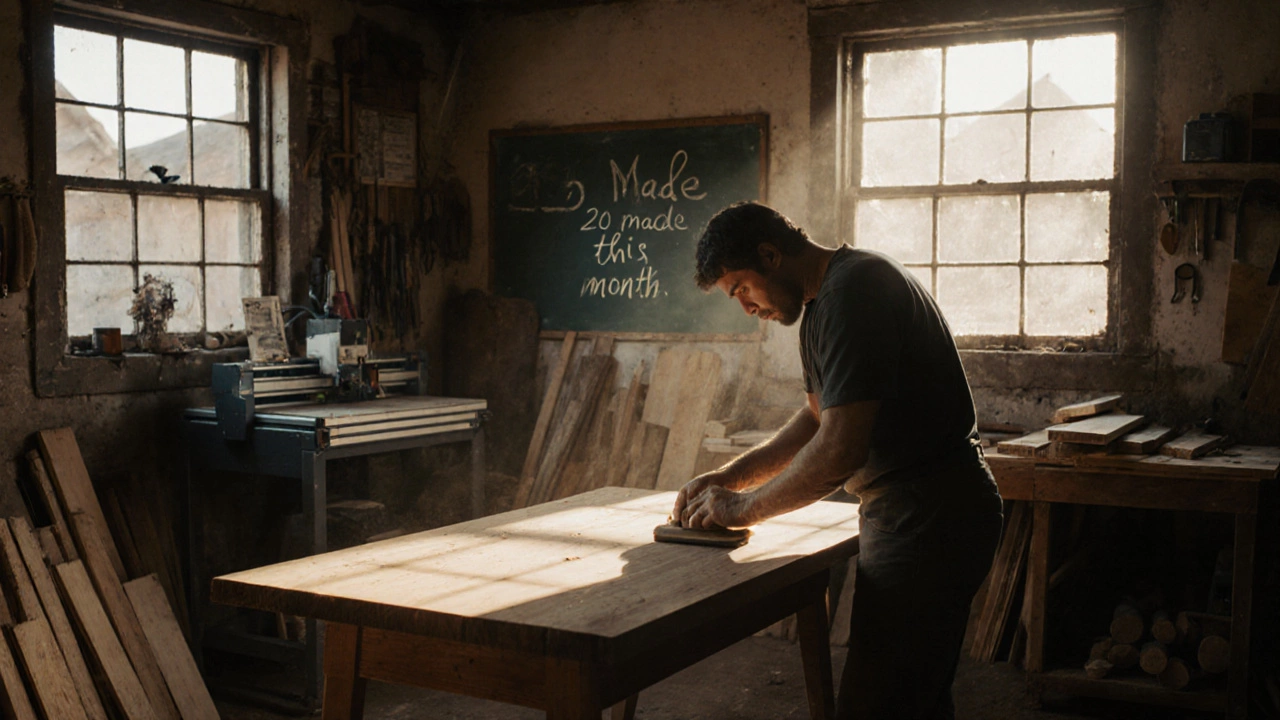A small manufacturer isn’t just a tiny factory with a few workers. It’s a business that makes things - often by hand or with limited machines - and sells them locally or online. These companies usually have fewer than 50 employees, operate on a modest budget, and make products in small batches. They’re not competing with big factories that churn out thousands of units a day. Instead, they focus on quality, customization, and community. If you’ve bought a locally made leather wallet, a hand-painted ceramic mug, or custom metal brackets for a bike shop, you’ve already supported a small manufacturer.
What Defines a Small Manufacturer?
There’s no single legal definition, but in most countries, a small manufacturer is considered one with:
- Under 50 employees
- Annual revenue under $10 million USD (or equivalent in local currency)
- Production done in a single facility or workshop
- Ownership by an individual, family, or small group
- Products made in low to medium volumes
In Australia, the Australian Bureau of Statistics classifies small businesses as those with 0-19 employees. Many small manufacturers fall into this range. In the U.S., the SBA defines small manufacturers as those with fewer than 500 employees, but the real ones - the ones you see in local markets - are often under 20.
What sets them apart isn’t size alone. It’s how they work. They don’t have supply chains stretching across continents. They don’t outsource everything. They build relationships - with customers, suppliers, and even the local council. They fix their own machines. They answer their own phones. They know their customers by name.
What Do Small Manufacturers Actually Make?
Small manufacturers don’t make smartphones or cars. But they make the things those big companies can’t - or won’t.
- Custom furniture - handcrafted tables, built-to-fit shelves, or restored vintage pieces
- Specialty food products - small-batch sauces, organic jams, artisanal cheeses
- Hardware and tools - custom metal brackets, hand-forged knives, bicycle parts
- Textiles and apparel - locally woven fabrics, made-to-order clothing, printed tote bags
- Electronics accessories - handmade speaker cabinets, custom circuit boards for niche devices
- Medical or assistive devices - custom orthotics, adaptive grips, mobility aids
Many of these products are designed to solve a specific problem for a local market. A manufacturer in Brisbane might make waterproof outdoor seating for coastal homes. One in Adelaide might produce gluten-free baking mixes for local cafes. They don’t need to scale globally to be profitable. They just need to serve their community well.
How Do Small Manufacturers Operate?
Running a small manufacturing business is messy. It’s not like in the movies. There’s no clean factory floor with robots. It’s often a garage, a shed, or a rented unit in an industrial park.
Here’s how they actually work day-to-day:
- Start with a need - Most small manufacturers begin because they saw something missing. Maybe they couldn’t find the right tool for their workshop. Or their bakery needed custom packaging that didn’t leak.
- Build prototypes - They use scrap materials, 3D printers, or hand tools to test ideas. No big R&D department. Just trial and error.
- Source locally - They buy wood from nearby sawmills, metal from local suppliers, or fabric from regional mills. This keeps costs low and reduces shipping.
- Make in small batches - They might make 20 units at a time, sell them, then make the next 20 based on feedback. No mass production.
- Sell directly - Farmers markets, Etsy, Instagram, local shops. They avoid big retailers because margins are too thin.
- Adapt fast - If a customer asks for a different color, they change it. If a part breaks, they fix it. No corporate approval needed.
This flexibility is their superpower. A big company might take six months to change a product design. A small manufacturer can do it in a weekend.

Why Small Manufacturers Matter
They’re not just making stuff. They’re keeping skills alive.
Think about this: 30 years ago, almost every town had a local metalworker, a tailor, a woodworker, a baker who made their own bread. Now, most of those jobs disappeared to overseas factories. Small manufacturers are bringing them back.
They create jobs that can’t be automated easily. They reduce waste by making only what’s needed. They use local materials, which cuts down on carbon emissions. And they’re often the first to adopt sustainable practices - because they can’t afford to waste anything.
In Australia, small manufacturers contribute over $100 billion to the economy each year. They employ more people than mining in some regions. And they’re growing. More people want things made close to home - things with a story, with a maker’s name on them.
Challenges Small Manufacturers Face
It’s not all easy. Running a small manufacturing business is hard work.
- Access to capital - Banks don’t always understand manufacturing. They see a workshop, not a business. Getting a loan for a CNC machine or a kiln can be tough.
- Regulations - Food safety, chemical handling, workplace safety - the rules are the same as for big factories, but small makers don’t have legal teams to help.
- Competition from imports - Cheap goods from overseas undercut prices. A $5 plastic toy from China can make it hard to sell a $25 wooden one.
- Skills shortage - Finding people who know how to weld, sew, or machine metal is getting harder. Apprenticeships are fading.
- Marketing - Most small manufacturers are great at making things. Not so great at selling them online.
Many rely on government grants, local business networks, or community support to survive. Programs like Australia’s Manufacturing Modernisation Fund or the U.S. Manufacturing Extension Partnership help with training, equipment, and market access.

How to Spot a Real Small Manufacturer
Not every “handmade” label is genuine. Here’s how to tell the real ones:
- They show the maker - Photos of the person, the workshop, the tools. No stock images.
- They explain the process - “Each piece is sanded by hand,” “Made in our Brisbane studio,” “Only 10 made this month.”
- They respond to questions - If you email them, they reply. Fast.
- They have a local presence - Listed on local business directories, sold at farmers markets, or have a physical workshop you can visit.
- They don’t sell on Amazon - Real small manufacturers avoid marketplaces that take 40%+ in fees and bury them in search results.
If a product says “handmade” but the packaging looks mass-produced and the website has no contact info - it’s probably not a small manufacturer. It’s a middleman.
How to Support Small Manufacturers
You don’t need to be rich to help. Here’s how:
- Buy local - Choose a handmade item over a cheap imported one, even if it costs a little more.
- Leave reviews - A five-star review on Google or Etsy means more than you think.
- Share their work - Post a photo on Instagram. Tag them. Tell a friend.
- Ask for custom orders - If you need something specific, ask if they can make it. Many will.
- Advocate for them - Tell your local council they’re important. Push for space in markets, reduced fees, or training programs.
Every dollar you spend with a small manufacturer goes back into your community. It pays a local worker. It buys local materials. It keeps skills alive. It’s not just a purchase. It’s a vote.
Is a small manufacturer the same as a cottage industry?
Yes, they’re very similar. A cottage industry usually refers to home-based production - like someone sewing clothes in their garage. A small manufacturer might have a small workshop outside the home, but both are defined by small scale, direct sales, and handmade or low-volume production. The terms are often used interchangeably.
Can a small manufacturer grow into a big one?
Yes, but most don’t want to. Growing means hiring more people, dealing with complex supply chains, and losing the personal touch that made them special. Some do scale - like the Australian company Breville, which started as a small appliance maker in the 1930s. But most small manufacturers choose to stay small because it’s more sustainable, more fulfilling, and more profitable on their own terms.
Do small manufacturers use automation?
Some do - but selectively. A small woodworker might use a CNC router to cut precise shapes, but still sand and finish each piece by hand. A food producer might use a semi-automatic bottling line but still cook in small batches. Automation helps them be more consistent and efficient, not replace the human touch. The goal isn’t to become a factory - it’s to make better products without burning out.
How do small manufacturers handle quality control?
They don’t have QA departments. The maker checks every item. If something’s off, they fix it or toss it. Because they’re making only 10 units a week, not 10,000, they can afford to be picky. Customers notice. That’s why repeat buyers trust them. A broken hinge on a $200 chair isn’t just a defect - it’s a personal failure.
Are small manufacturers environmentally friendly?
Often, yes. Because they work with small volumes, they generate less waste. Many use reclaimed wood, recycled metal, or non-toxic finishes. They don’t ship globally, so their carbon footprint is low. And since they’re close to their customers, they can offer repair services instead of encouraging disposability. Sustainability isn’t a marketing tactic - it’s a necessity.
What’s Next for Small Manufacturers?
The future isn’t about getting bigger. It’s about getting smarter.
More small manufacturers are using digital tools: online stores, inventory apps, social media marketing, even AI to design custom patterns. They’re forming cooperatives to share equipment and bulk-buy materials. Local governments are starting to set aside space for makerspaces and micro-factories.
Consumers are waking up too. They’re tired of plastic junk. They want things that last. They want to know who made their stuff. That’s why small manufacturers are not just surviving - they’re thriving.
If you’re thinking of starting one, don’t wait for the perfect setup. Start small. Make one thing well. Sell it to one person. Listen. Improve. Repeat. You don’t need a factory. You just need a skill, a workbench, and the courage to begin.
